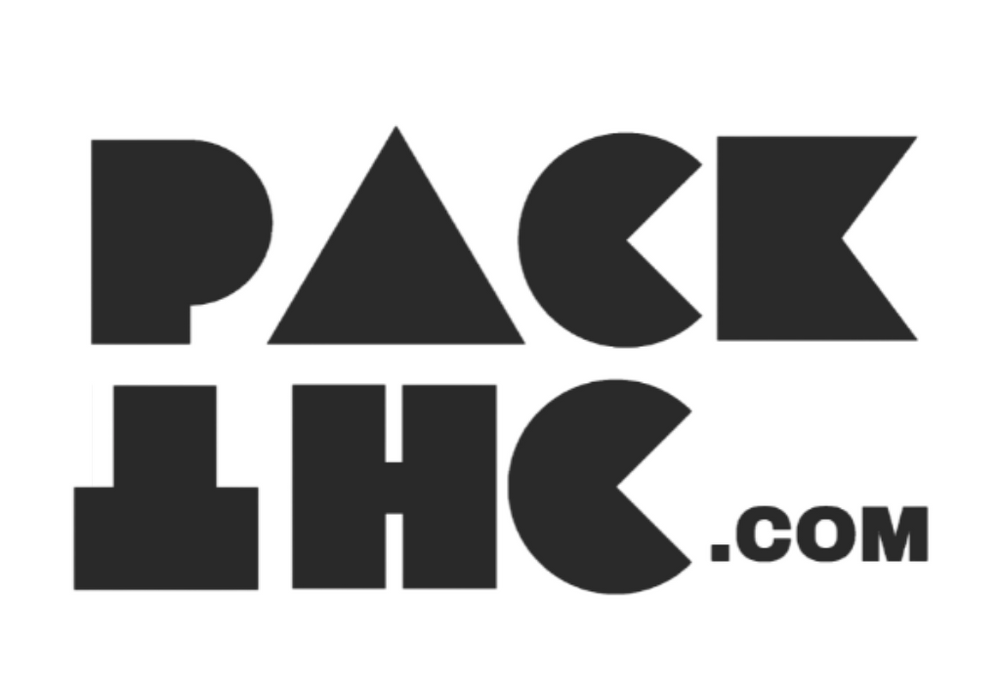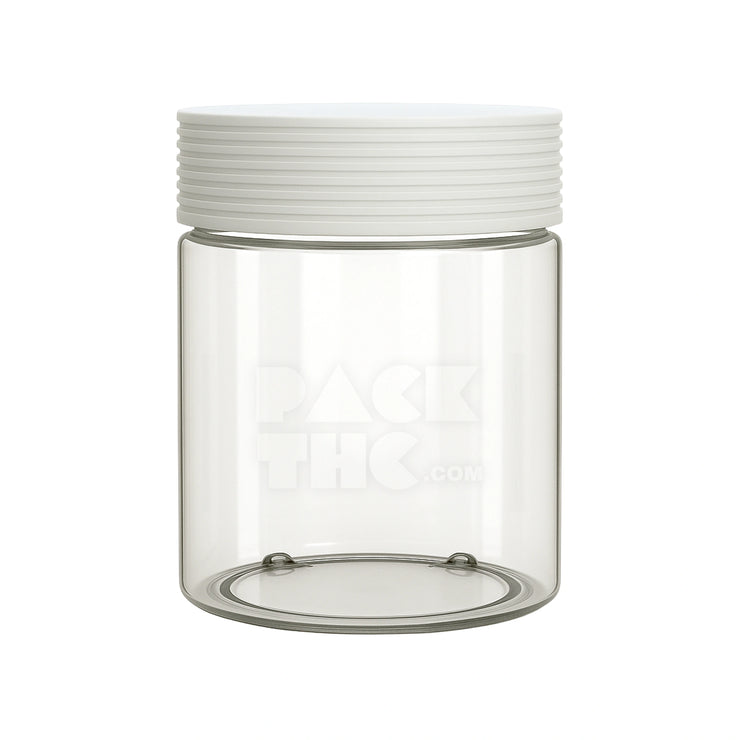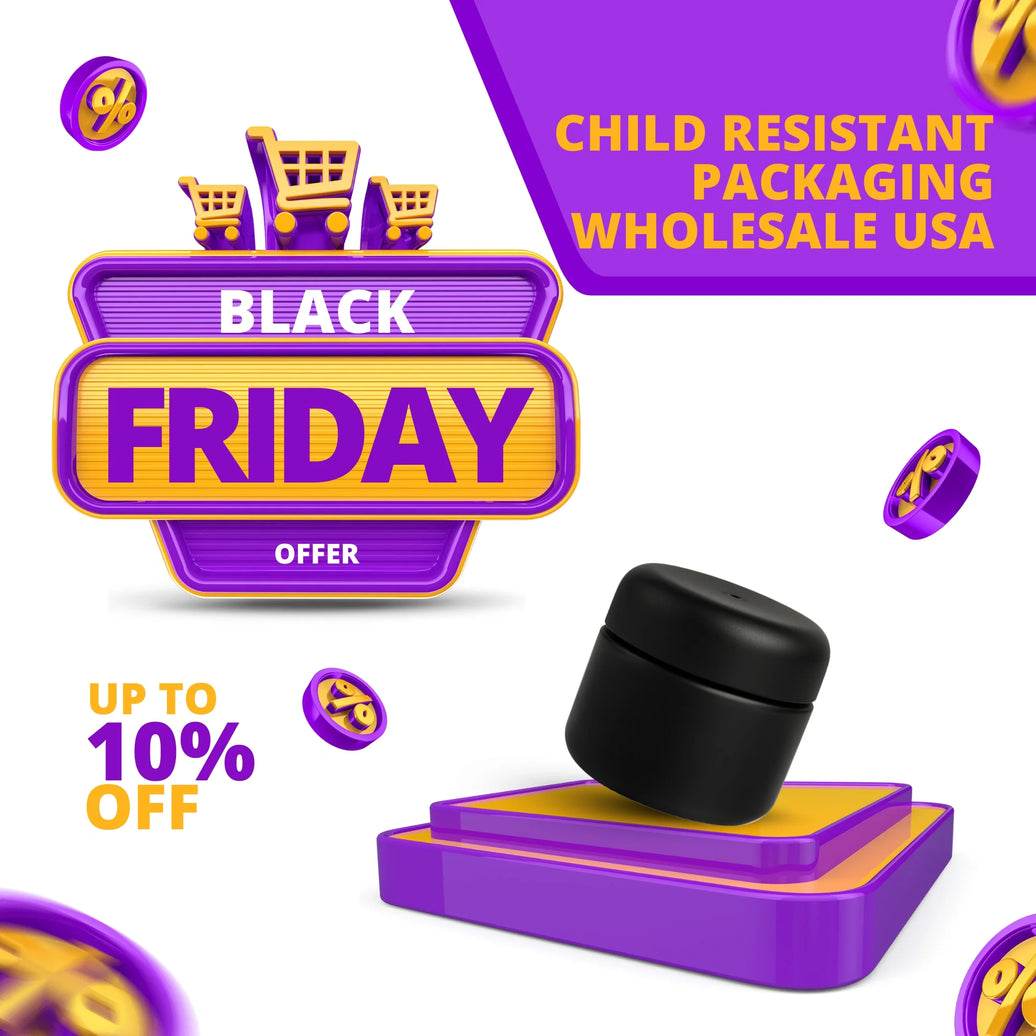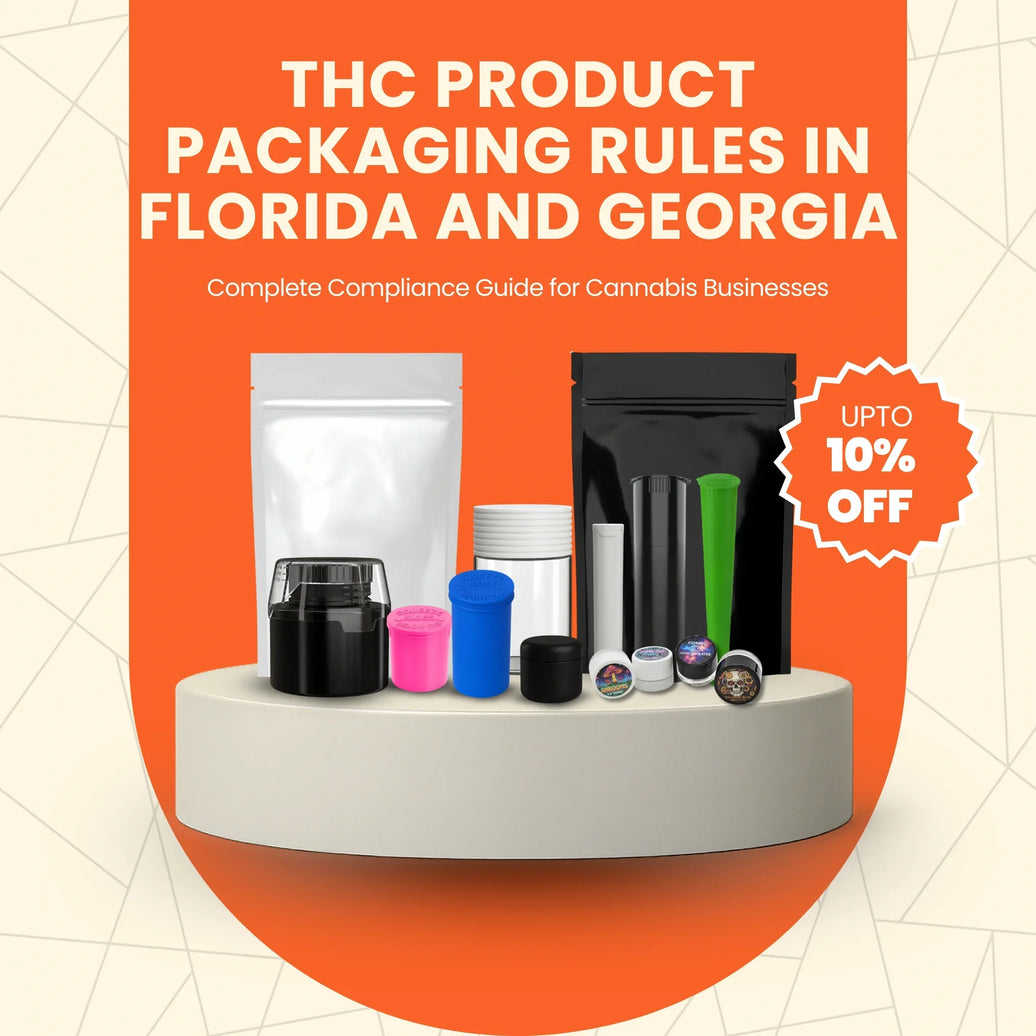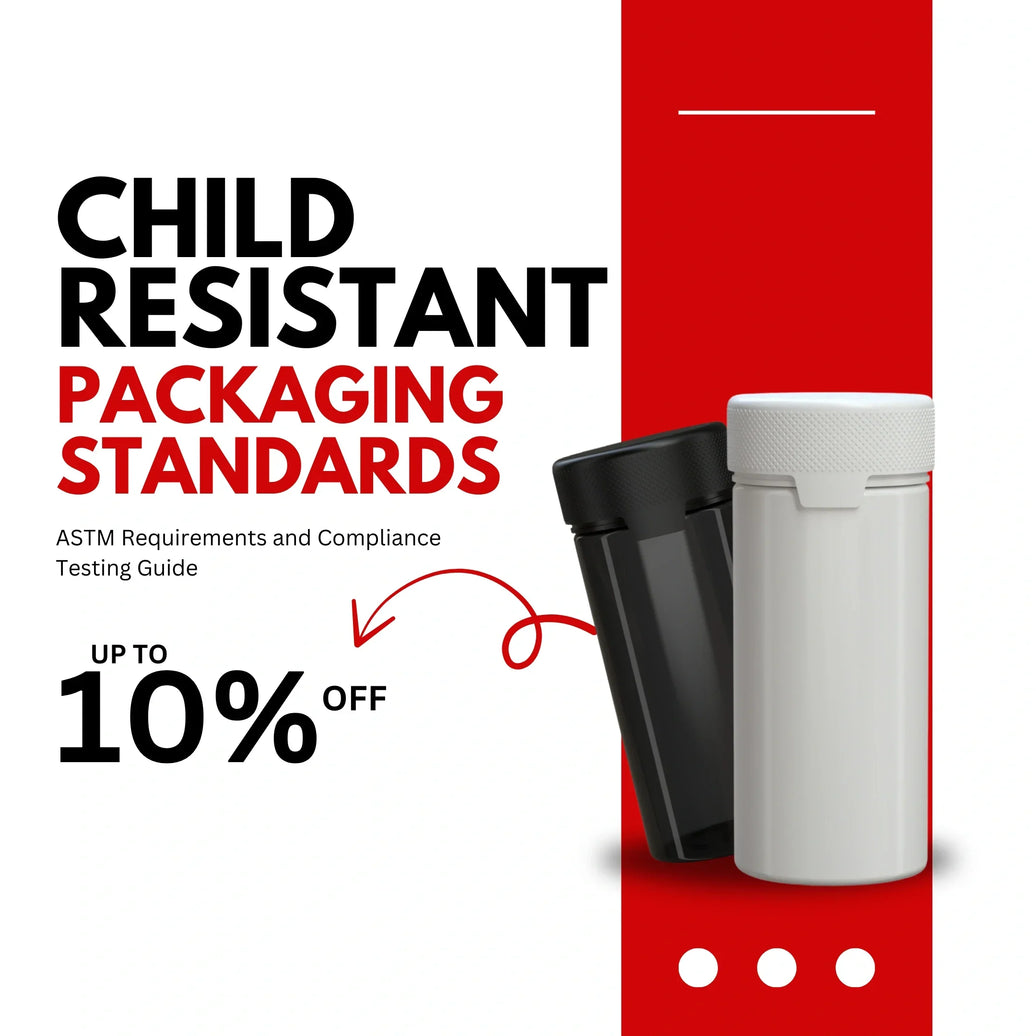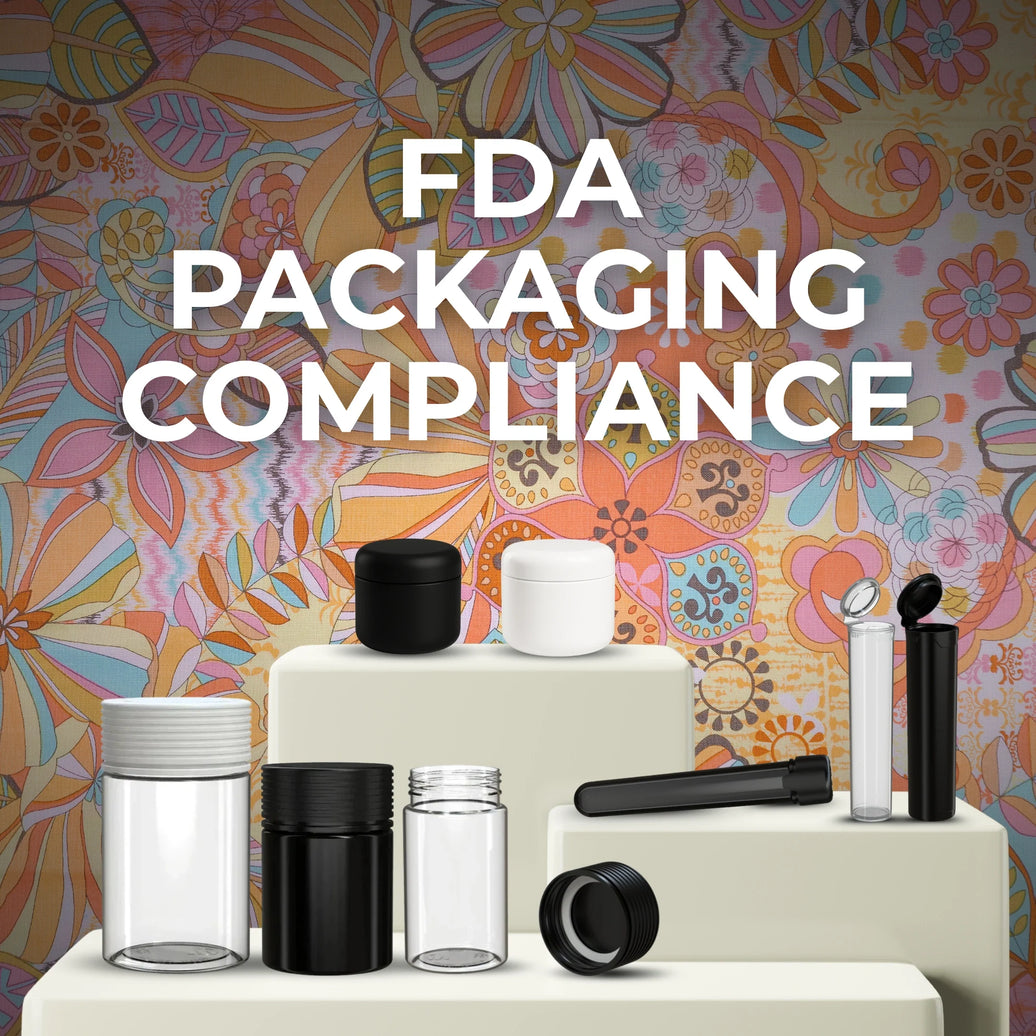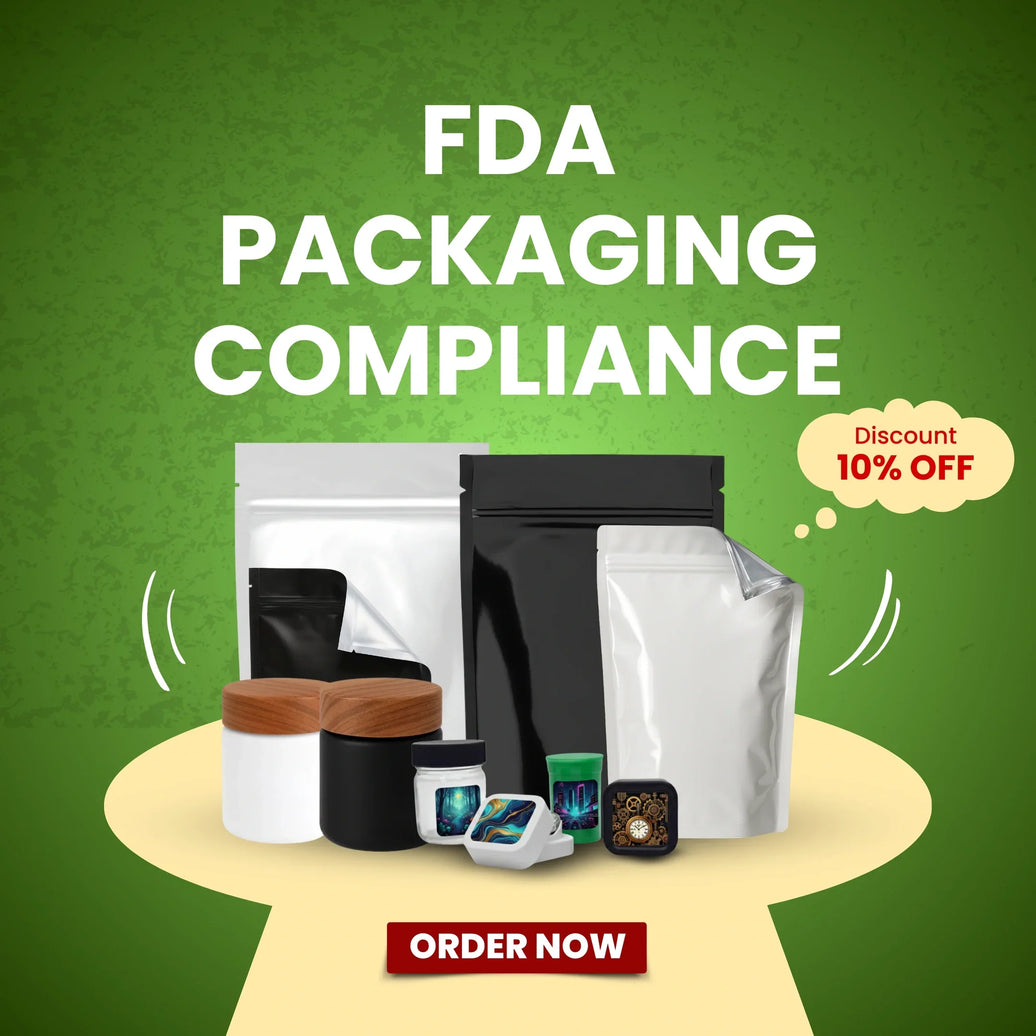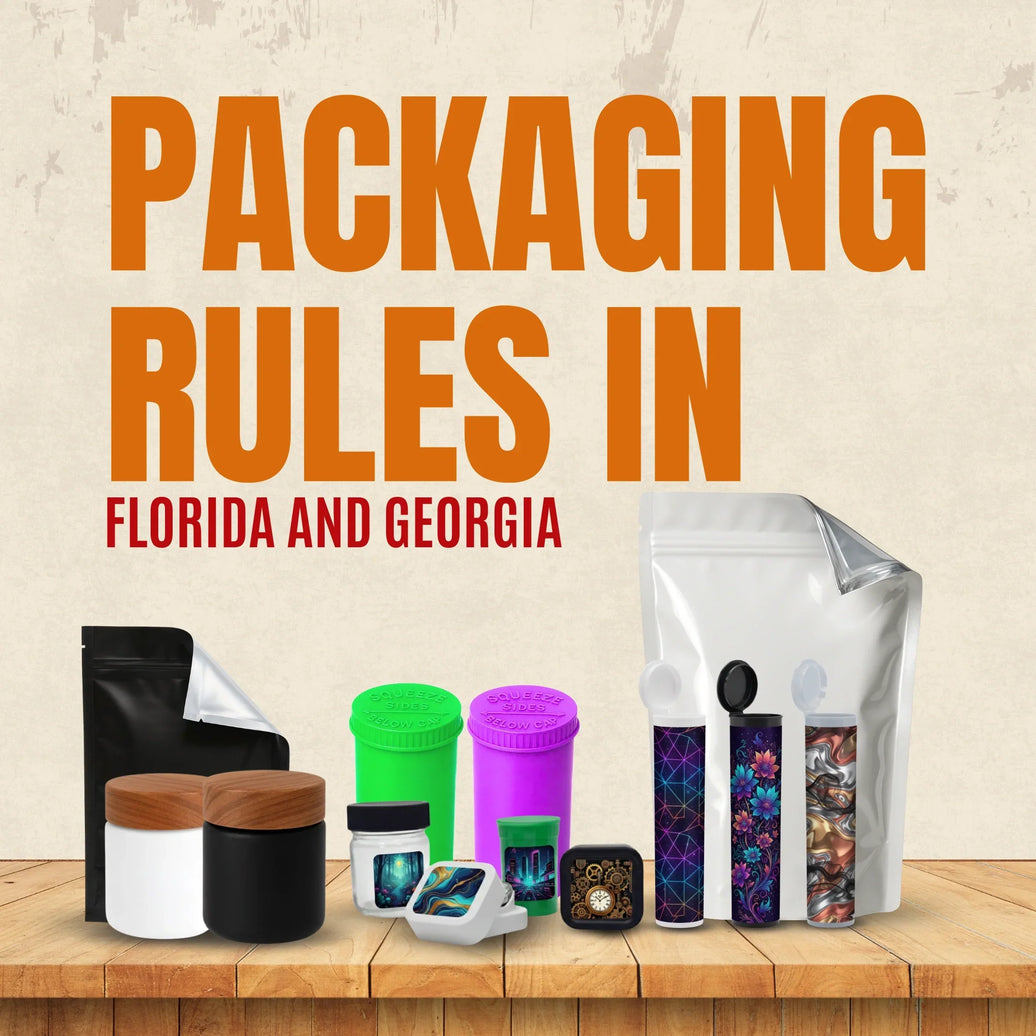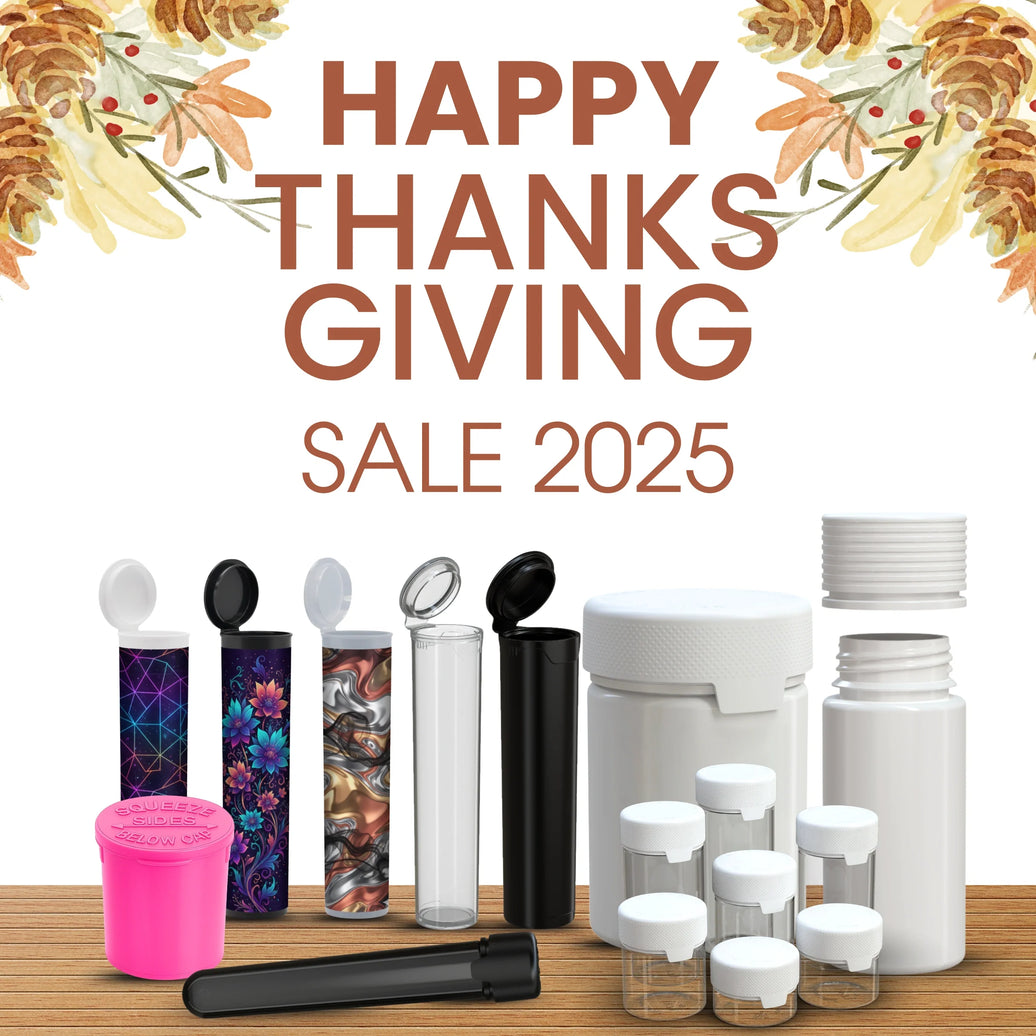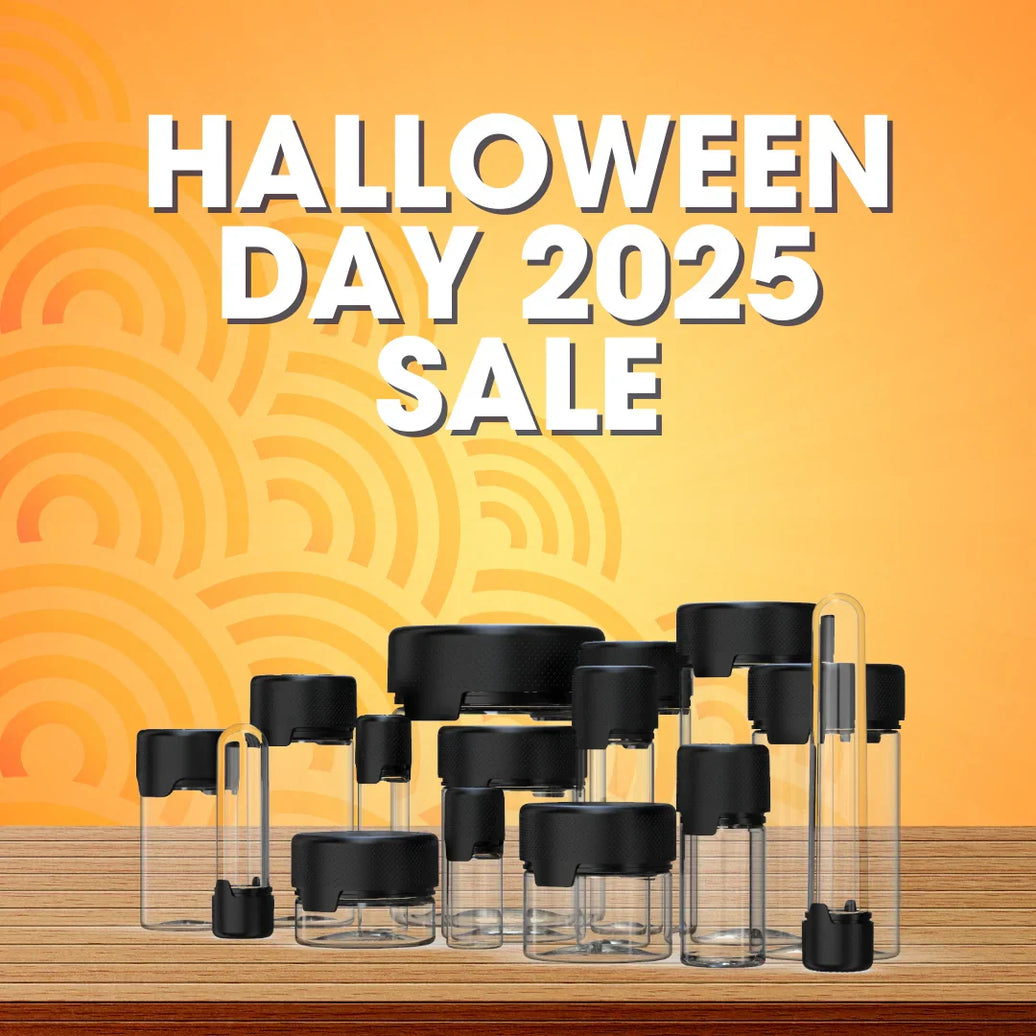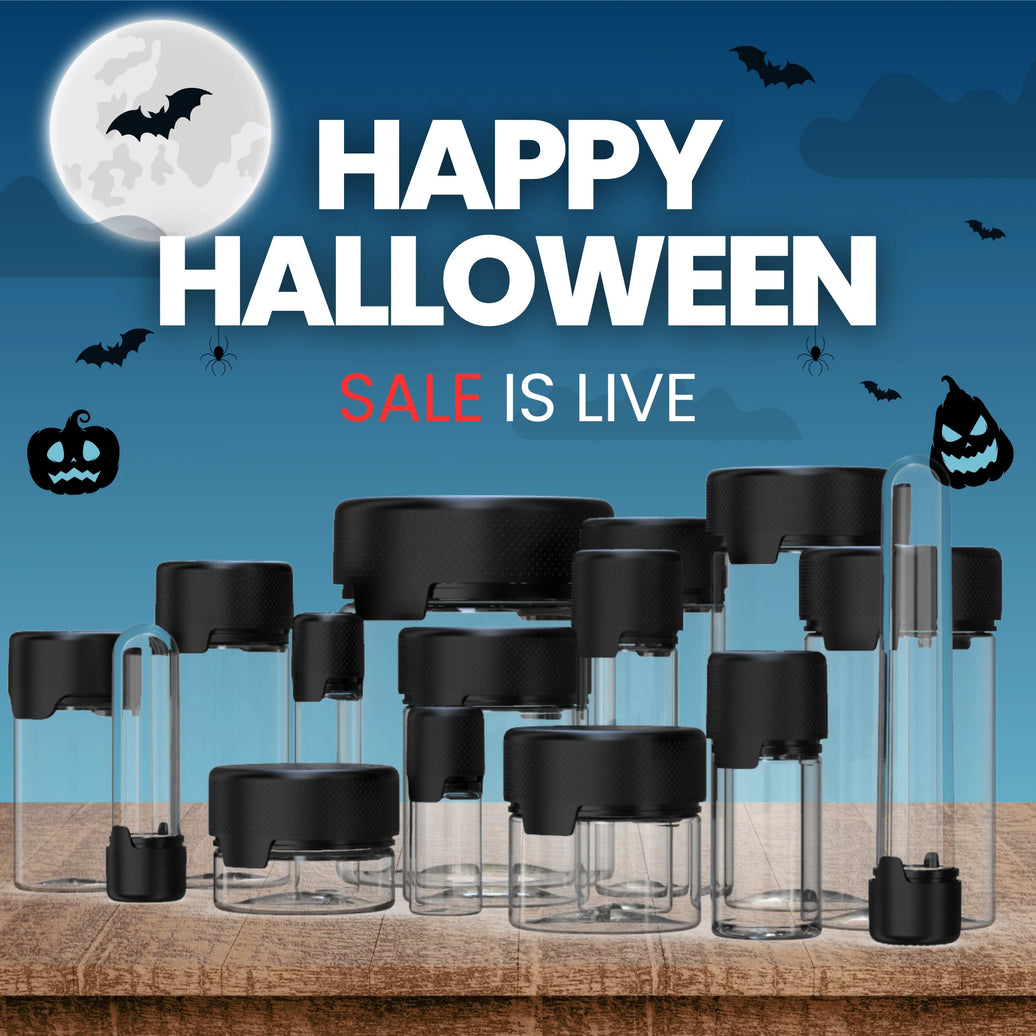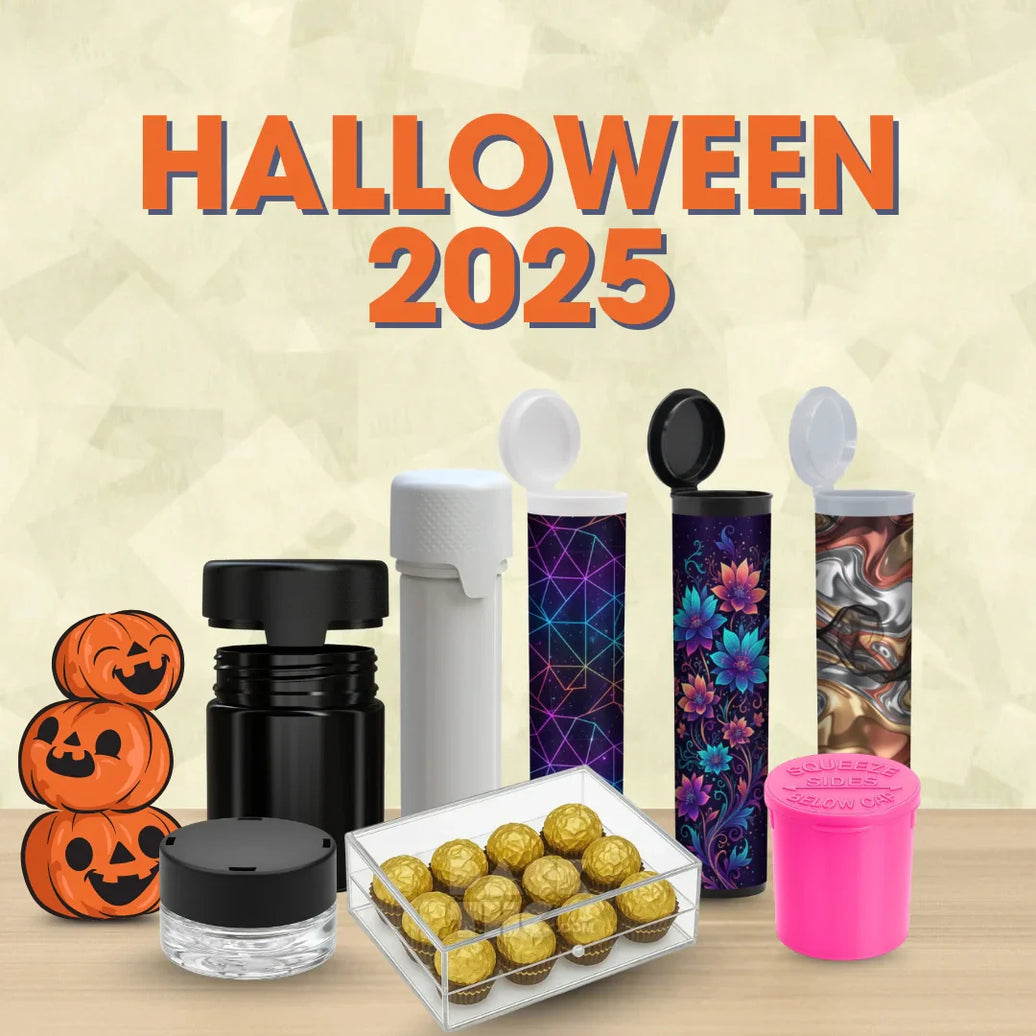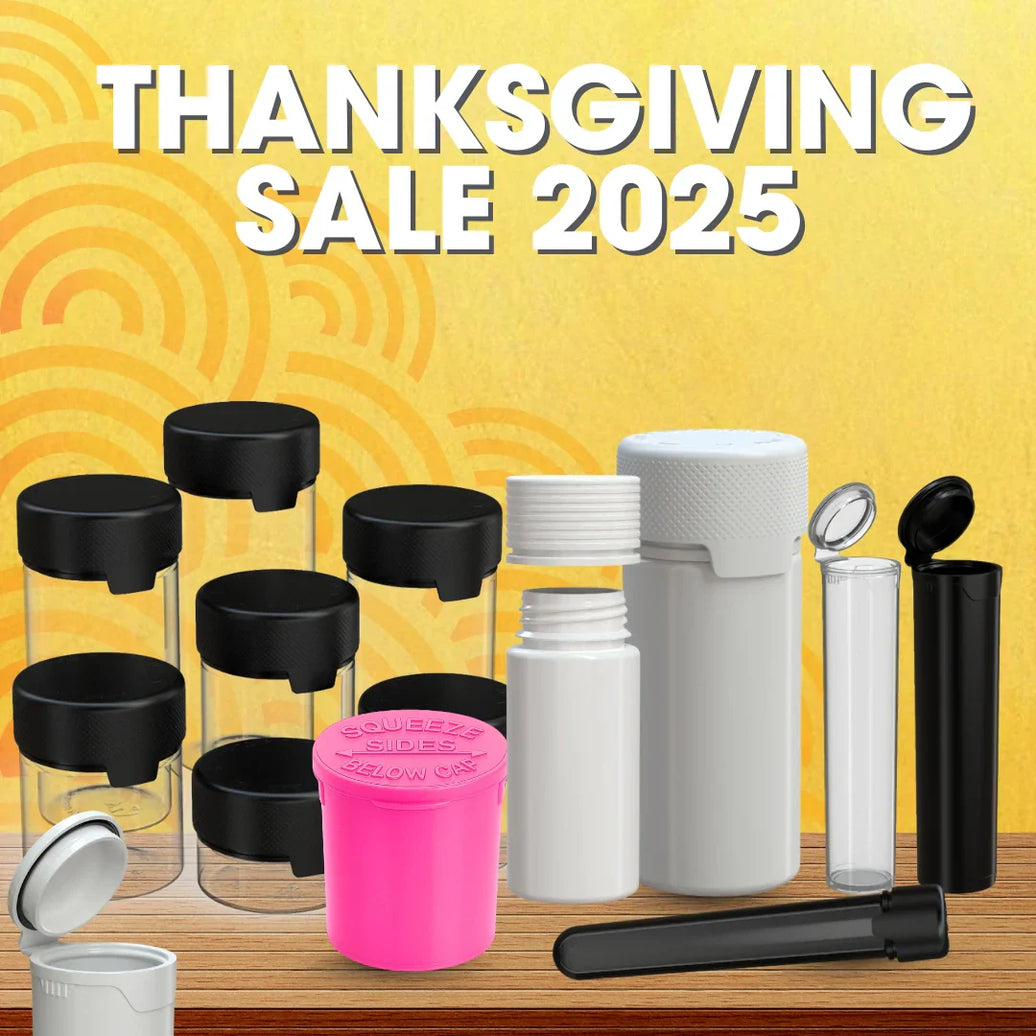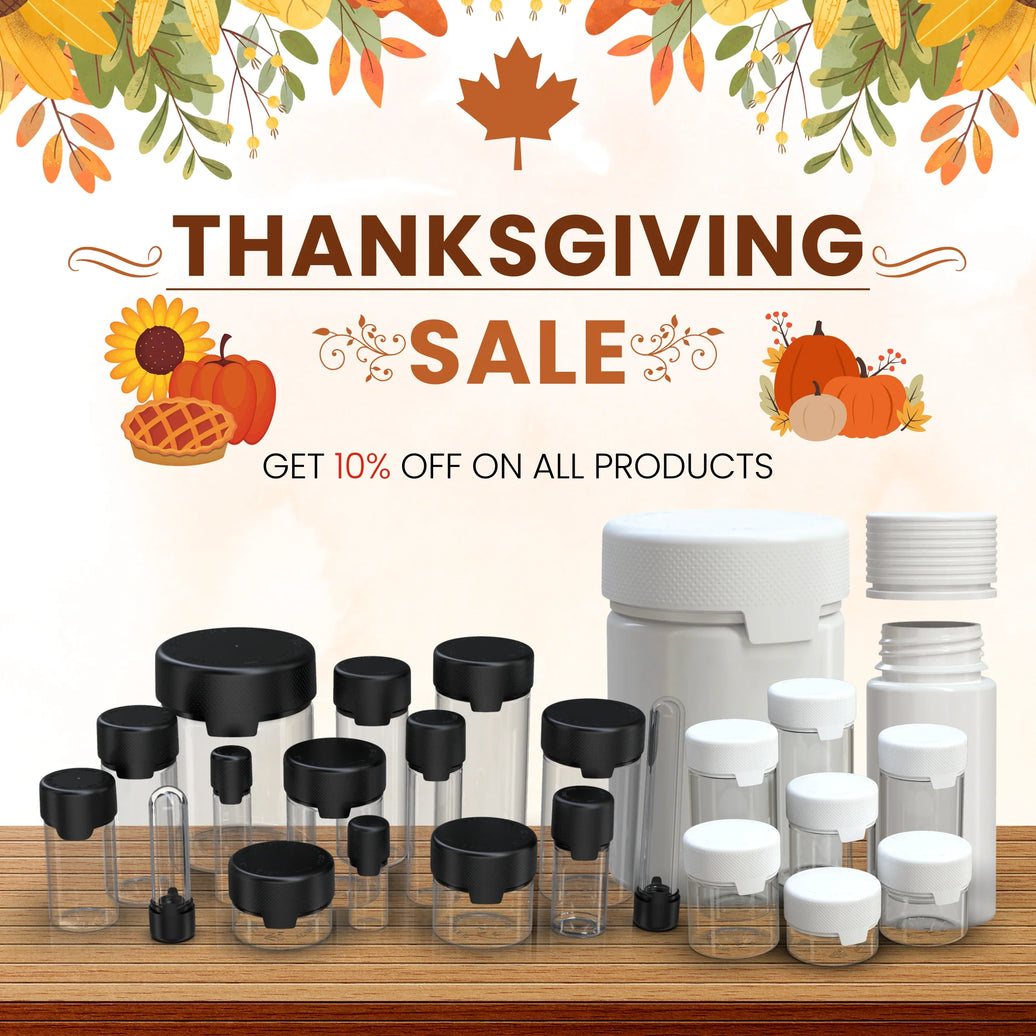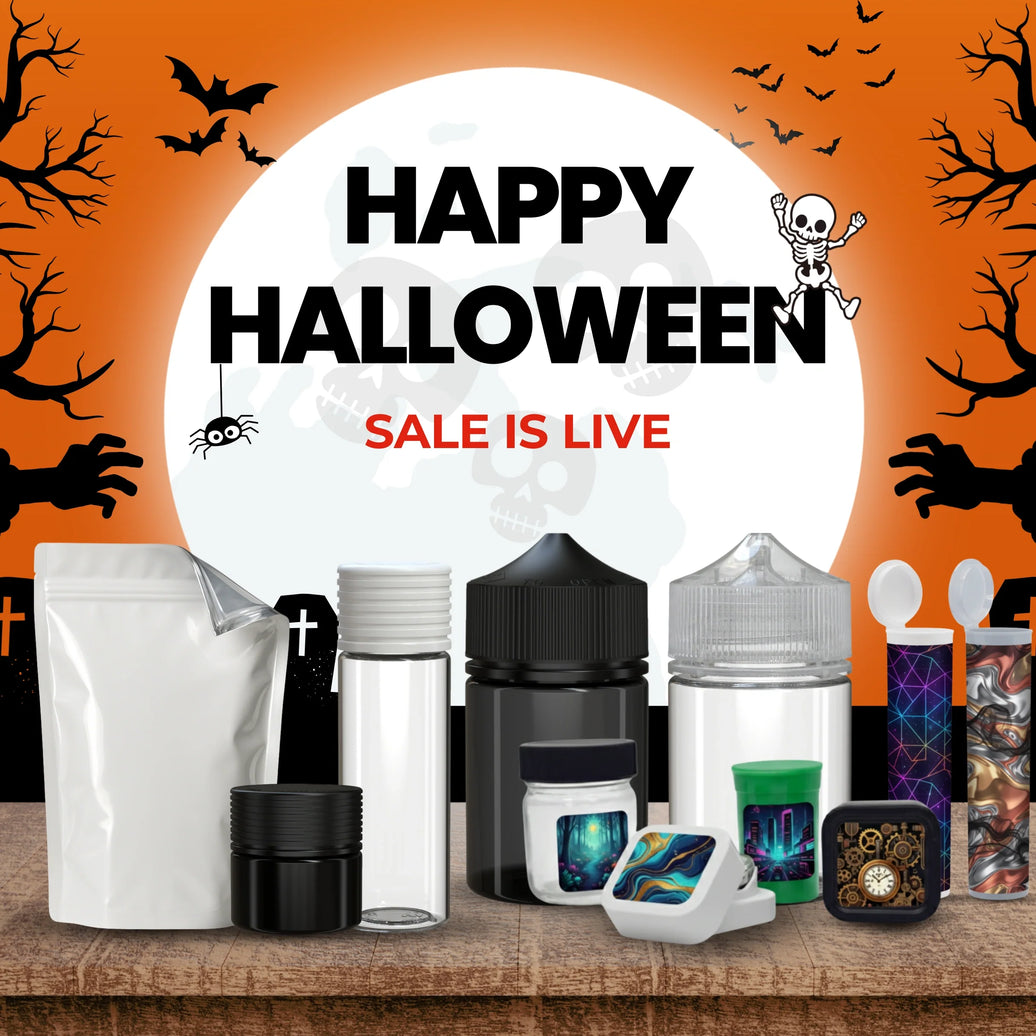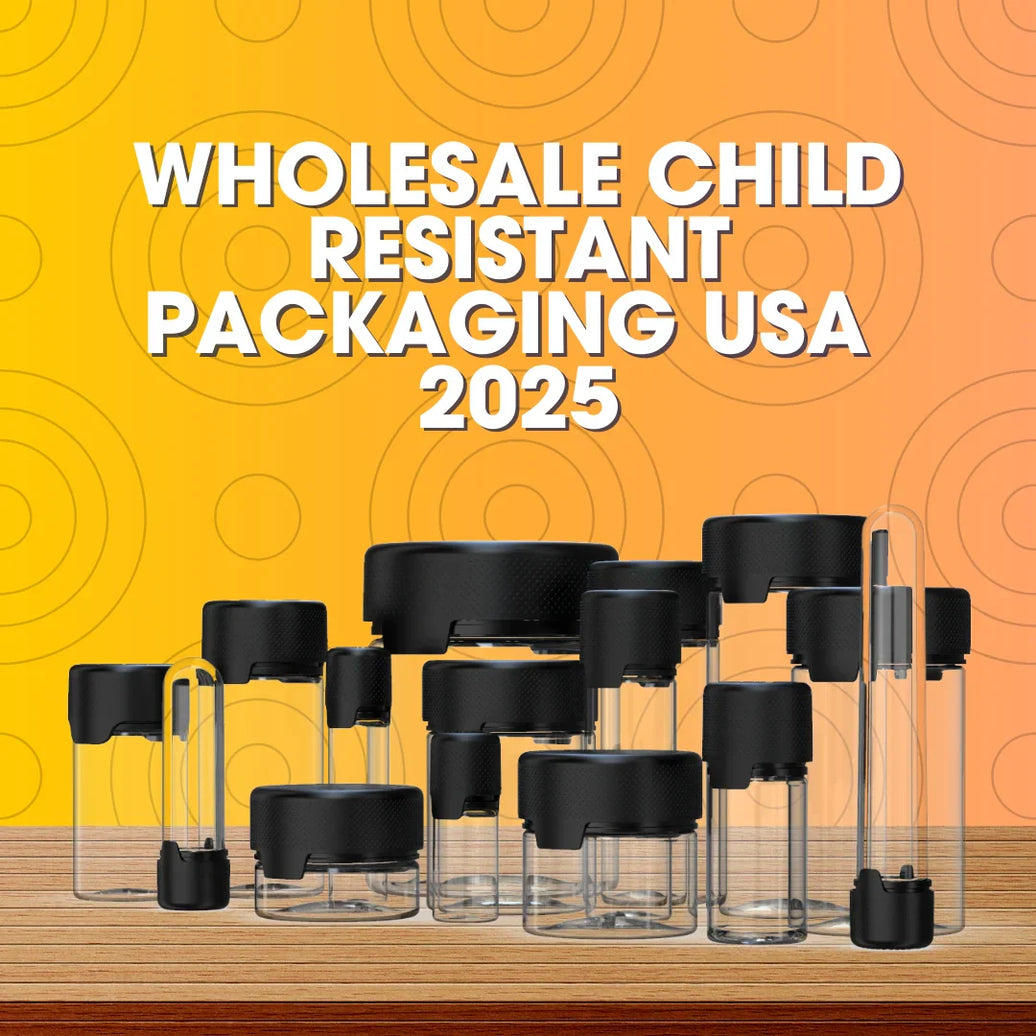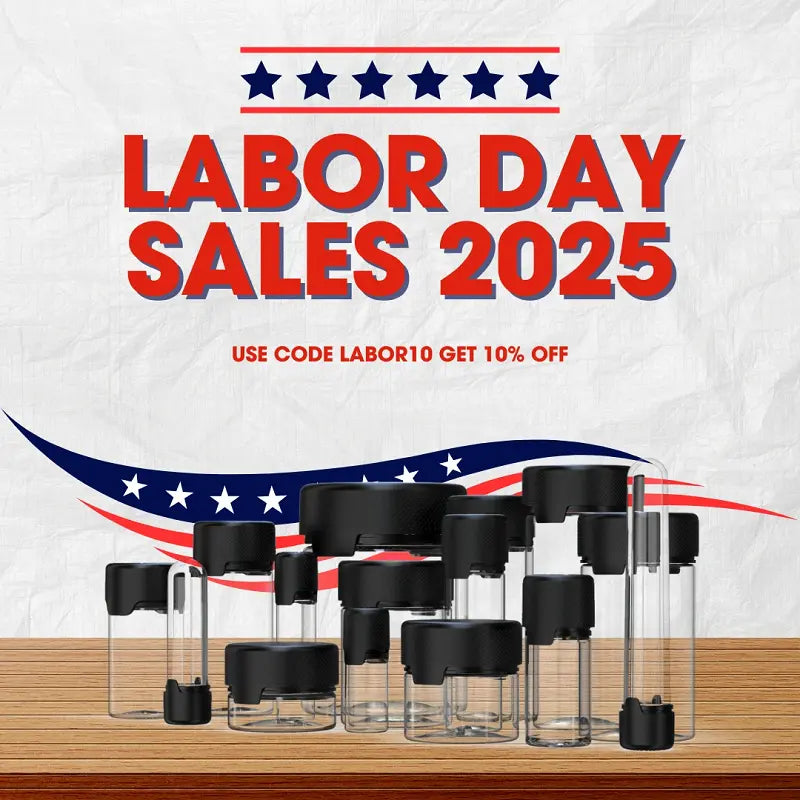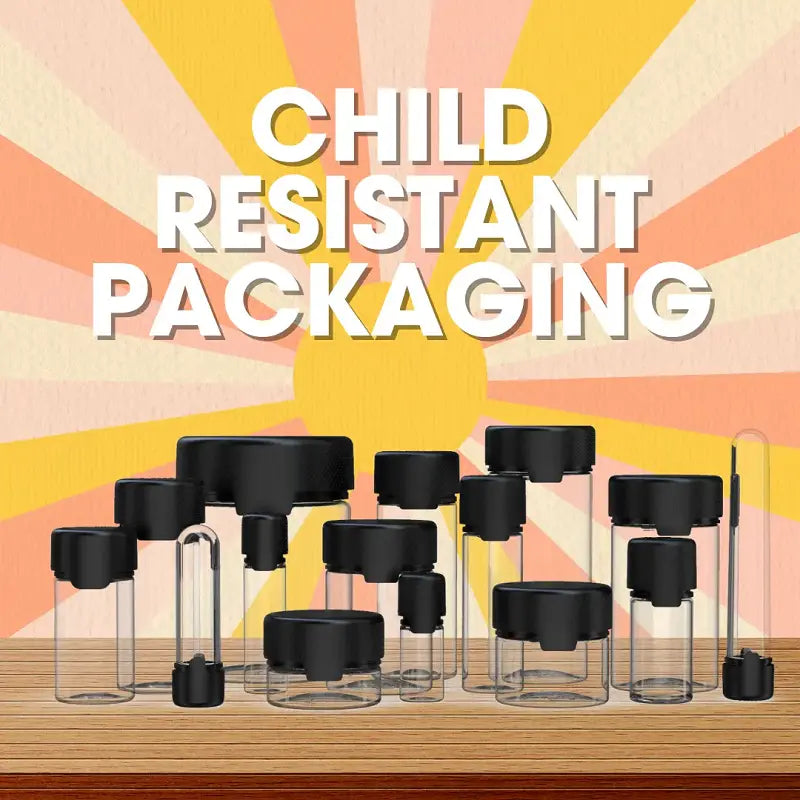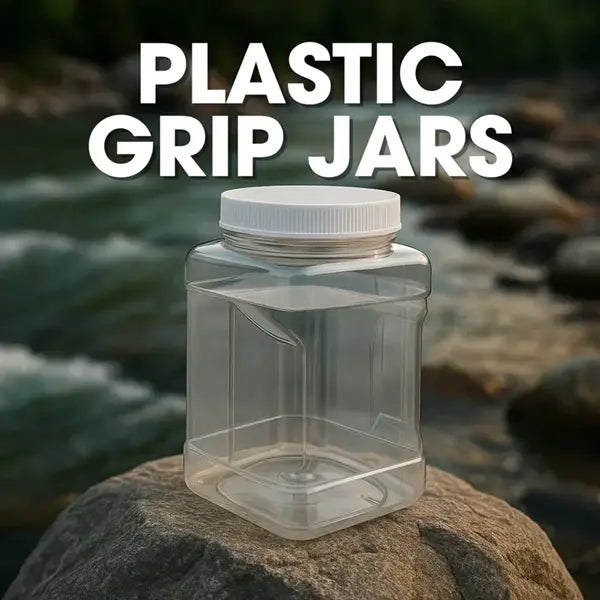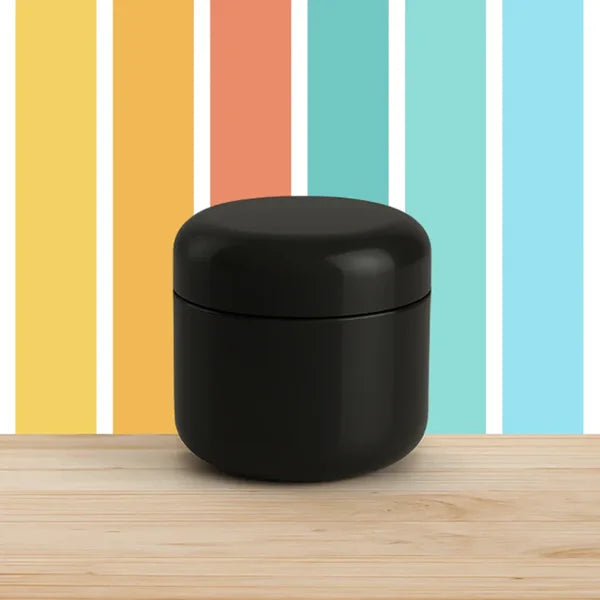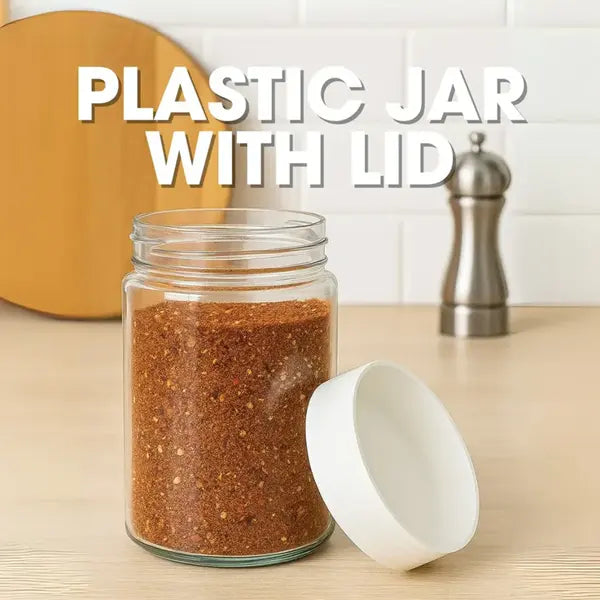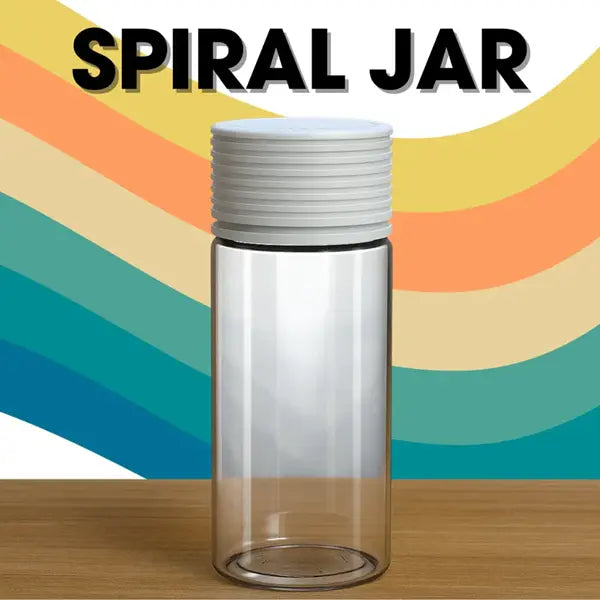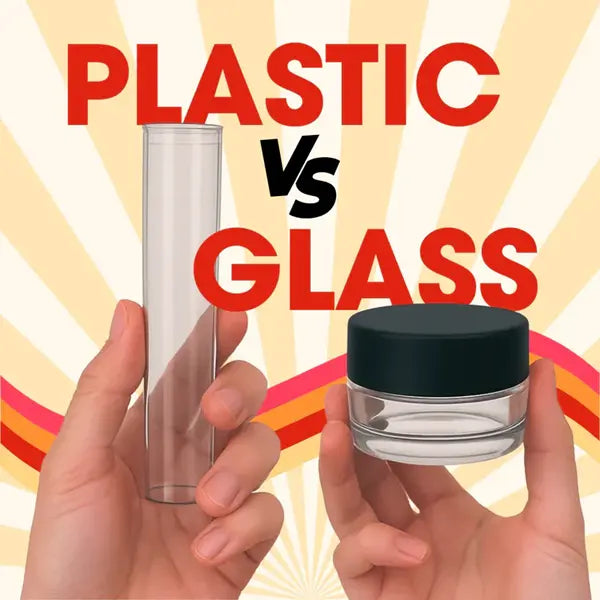The rapidly evolving landscape of THC product regulations in Florida and Georgia presents unique challenges for cannabis businesses seeking to maintain compliance while building successful operations. Understanding the distinct requirements for medical cannabis, hemp-derived THC products, and various product categories is essential for avoiding costly violations and ensuring market access.
Florida THC Product Packaging Requirements
Medical Cannabis Packaging Standards
Florida's medical cannabis program operates under strict packaging requirements designed to ensure patient safety and prevent diversion. The state mandates that all medical marijuana products use child-resistant packaging that complies with the Poison Prevention Packaging Act of 1970, establishing a fundamental safety baseline for all cannabis products in the medical program.
Smoking forms of cannabis face particularly stringent packaging requirements, including opaque, sealed receptacles that completely obscure the product contents. These packages must feature plain white designs with minimal branding, displaying only the universal marijuana symbol and department-approved logos. This approach prioritizes safety and regulatory compliance over marketing appeal.
All medical cannabis packages must include comprehensive labeling information including compliance statements, the name of the dispensing organization, batch numbers, and harvest identifiers. This traceability system enables rapid identification of products during investigations or recalls while providing patients with essential product information.
Patient package inserts represent a critical component of Florida's medical cannabis packaging requirements, providing detailed clinical information, dosage guidelines, usage instructions, and comprehensive safety warnings. These inserts ensure that patients receive essential medical information regardless of their interaction with healthcare providers.
Hemp-Derived THC Product Regulations
Florida significantly updated its hemp extract regulations effective March 12, 2025, creating new packaging requirements for hemp-derived THC products that parallel many medical cannabis standards while addressing unique considerations for these products.
Child-resistant packaging requirements extend to hemp-derived THC products, following ASTM D 3475-20 standards that ensure containers cannot be opened by children under five years of age while remaining accessible to adults. This standard provides specific testing protocols and performance requirements that manufacturers must meet.
The updated regulations specifically prohibit packaging designs that appeal to children, including colorful graphics, cartoon characters, or playful imagery that might attract underage users. This approach recognizes that hemp-derived products may face different distribution channels than medical cannabis while maintaining strong youth protection standards.
Enhanced labeling requirements mandate that serving sizes be expressed in common household measurements, making dosage information more accessible to consumers who may lack experience with cannabis products. This requirement helps prevent accidental overconsumption while supporting responsible use patterns.
Certificate of analysis access represents a significant innovation in Florida's hemp regulations, requiring products to include scannable QR codes or barcodes that provide consumers with laboratory testing information within three steps of scanning. This transparency requirement helps build consumer confidence while supporting informed purchasing decisions.
Water activity requirements for hemp flower products establish specific moisture content standards of 0.60 ± 0.05 to prevent microbial growth and ensure product stability. This technical requirement demonstrates Florida's attention to product safety details that may not be immediately obvious to consumers.
Georgia THC Product Packaging Requirements
Consumable Hemp Product Standards
Georgia's approach to THC product packaging focuses primarily on consumable hemp products, with comprehensive regulations addressing child safety, product integrity, and consumer protection. The state's Rule 40-32-5-.04 establishes detailed packaging requirements that go beyond basic safety considerations.
Child-resistant packaging requirements in Georgia emphasize tamper-evident features alongside traditional child resistance, ensuring that products show clear signs of opening or alteration. This dual protection approach helps prevent both accidental child access and product tampering during distribution.
The prohibition against child-appealing designs includes specific restrictions on resembling candy, snacks, or familiar food products. Georgia recognizes that edible THC products pose particular risks for accidental consumption by children who may mistake them for regular food items.
Multi-serving packages must include resealable mechanisms that maintain product integrity throughout the consumption period, with specific exceptions for vaporizer products where resealing may not be practical or necessary. This requirement supports controlled dosing while preventing product degradation.
Tincture products face unique packaging requirements including calibrated droppers that enable accurate single-serving dosing. This specification recognizes the challenges consumers face in measuring liquid cannabis products and provides tools for responsible consumption.
Georgia Medical Cannabis Packaging
Georgia's medical cannabis program operates under the oversight of the Georgia Medical Cannabis Commission (GMCC), which requires pre-approval of all packaging designs before commercial use. This proactive approach helps prevent compliance issues while ensuring consistency across licensed operators.
The universal THC warning symbol must appear prominently on all products containing THC, with specific exemptions for products that contain no detectable THC content. This symbol provides immediate recognition of psychoactive content while supporting informed consumer decisions.
Production transparency requirements mandate comprehensive labeling including licensee names and license numbers, product brand names, batch identifiers, laboratory registration numbers, and expiration dates. This information supports regulatory oversight while providing consumers with detailed product provenance.
Cannabinoid content disclosure requirements specify that labels must include concentrations of major cannabinoids including THC, THCA, CBD, CBDA, and any other cannabinoids present at concentrations above 1%. This detailed cannabinoid profiling helps consumers understand product composition and effects.
Product-Specific Packaging Requirements
Edible Product Standards
Gummy products represent the most tightly regulated edible category in both states, with Georgia establishing maximum limits of 10 mg delta-9-THC per individual gummy and package limits that vary depending on recent legislative updates. These limits reflect ongoing policy evolution as states balance access with safety concerns.
Florida's approach to edible packaging emphasizes child-resistant containers and clear labeling without establishing specific per-serving limits for hemp-derived products, instead relying on certificate of analysis disclosure and serving size labeling to support responsible consumption.
Package design requirements for edibles specifically prohibit resemblance to conventional candy or food products, recognizing the particular risks these products pose for accidental consumption. Both states emphasize that edible cannabis products must be clearly distinguishable from conventional food items.
Beverage Product Regulations
THC-infused beverages face unique packaging challenges that both Florida and Georgia address through specific container requirements and serving size limitations. Georgia establishes maximum concentrations of 10 mg delta-9-THC per 12 fluid ounce container, while Florida relies on general labeling and child-resistance requirements.
Resealable packaging requirements for multi-serving beverages recognize that consumers may not consume entire containers in single sessions. These requirements help prevent product degradation while supporting controlled consumption patterns.
Clear labeling of THC content per serving and per container helps consumers understand dosage implications, particularly important for beverages where THC effects may be delayed compared to smoking or vaping products.
Topical Product Standards
Topical THC products face different safety considerations than ingestible products, reflected in higher allowable THC concentrations in both states. Georgia permits up to 1,000 mg THC per package for topical products, recognizing the different absorption characteristics and safety profile of topically applied cannabis.
Child-resistant packaging remains required for topical products despite their different route of administration, maintaining consistent safety standards across product categories while recognizing that children may be attracted to cream or lotion containers.
Clear labeling requirements for topical products must specify intended use areas and application instructions, helping consumers use these products safely and effectively while avoiding unintended exposure to sensitive areas.
Tincture and Oil Product Requirements
Tincture products face some of the most detailed packaging requirements due to their liquid form and potential for dosing variability. Georgia requires calibrated droppers that enable accurate measurement of single servings, addressing common consumer challenges with liquid cannabis products.
Concentration limits for tinctures reflect their typically high bioavailability, with Georgia establishing maximum concentrations of 2 mg delta-9-THC per milliliter and total container limits of 60 ml. These limits help prevent accidental overconsumption while providing adequate product quantities for regular users.
Child-resistant packaging for liquid products must meet enhanced standards that address the particular risks of liquid spillage or accidental ingestion, often requiring specialized closure systems that maintain effectiveness after repeated opening and closing cycles.
Age Verification and Access Controls
Minimum Age Requirements
Both Florida and Georgia establish 21 as the minimum age for hemp-derived THC products, aligning with alcohol regulations while recognizing the psychoactive nature of these substances. Medical cannabis programs operate under separate age requirements that may include minor patients with appropriate medical documentation.
Age verification requirements extend beyond point-of-sale interactions to include packaging elements that clearly communicate age restrictions. Universal symbols and warning statements help reinforce age requirements while supporting retailer compliance efforts.
Packaging design requirements specifically prohibit elements that might appeal to individuals under 21, including bright colors, cartoon imagery, and references to popular culture that might resonate with younger demographics.
Access Prevention Measures
Child-resistant packaging standards require specific testing protocols that verify containers cannot be opened by children under five while remaining accessible to adults, including elderly users who may have limited dexterity. These standards balance safety with accessibility concerns.
Tamper-evident features provide additional security by clearly showing if products have been opened or altered during distribution. These features help prevent product contamination while providing consumers with confidence in product integrity.
Opaque packaging requirements prevent visual identification of cannabis products from outside containers, supporting discretion while making products less attractive to potential thieves or curious children.
Testing and Quality Assurance Integration
Certificate of Analysis Requirements
Both states require comprehensive laboratory testing of THC products with results made available to consumers through various mechanisms. Florida's QR code requirements represent an innovative approach to transparency that could serve as a model for other jurisdictions.
Testing parameters typically include cannabinoid profiles, residual solvent analysis, pesticide screening, microbial testing, and heavy metal detection. These comprehensive panels help ensure product safety while providing consumers with detailed product information.
Laboratory accreditation requirements ensure that testing facilities meet rigorous quality standards and provide accurate, reliable results. Both states maintain lists of approved testing laboratories and require regular proficiency testing to maintain approval.
Batch Tracking and Traceability
Seed-to-sale tracking systems in both states require detailed documentation of all cannabis products from cultivation through final sale. Packaging plays a critical role in this tracking by displaying batch identifiers and other traceability information.
Recall procedures depend heavily on effective batch identification through packaging labels, enabling rapid identification and removal of problematic products. Clear, durable labeling helps ensure traceability information remains readable throughout product distribution and storage.
Quality control documentation requirements often specify retention periods for packaging specifications, testing results, and production records. Companies must maintain these records to demonstrate ongoing compliance with regulatory requirements.
Compliance Strategies and Best Practices
Regulatory Monitoring Systems
The rapidly evolving nature of cannabis regulations requires systematic monitoring of regulatory changes in both states. Compliance teams should establish regular review procedures to identify new requirements and assess their impact on packaging operations.
Industry associations and legal experts provide valuable resources for staying current with regulatory developments while building networks with other compliance professionals facing similar challenges.
Regulatory agency communications including guidance documents, enforcement alerts, and public meetings provide insights into regulatory priorities and interpretation of existing requirements.
Multi-State Operations Considerations
Companies operating in both Florida and Georgia must navigate differing requirements while maintaining operational efficiency. Developing packaging systems that meet the most stringent requirements often provides the most practical approach for multi-state operations.
Supply chain coordination becomes more complex when addressing different state requirements, requiring careful vendor selection and inventory management to ensure appropriate packaging materials are available for each market.
Documentation systems must accommodate different reporting requirements and retention periods while maintaining clear audit trails that demonstrate compliance in each jurisdiction.
Quality Management Integration
ISO-based quality management systems can provide frameworks for managing cannabis packaging compliance while supporting continuous improvement initiatives. These systems help organizations maintain consistent quality while adapting to regulatory changes.
Supplier qualification programs must address cannabis-specific requirements including child-resistant testing, material safety documentation, and regulatory compliance verification. These programs help ensure that packaging suppliers understand and meet cannabis industry requirements.
Training programs for packaging personnel should address both technical requirements and regulatory compliance obligations, helping staff understand their roles in maintaining compliance while supporting business objectives.
Technology Integration and Innovation
Smart Packaging Applications
Digital technologies including NFC tags and QR codes are becoming standard features in cannabis packaging, providing consumers with access to detailed product information while supporting regulatory transparency requirements.
Blockchain technology offers potential solutions for enhanced traceability and authentication, helping prevent counterfeiting while providing immutable records of product provenance and testing results.
Temperature monitoring systems can provide valuable data about product storage conditions throughout distribution, helping maintain product quality while providing documentation for regulatory compliance.
Sustainable Packaging Solutions
Environmental considerations are becoming increasingly important in cannabis packaging, with some jurisdictions beginning to address packaging waste through regulations or incentive programs.
Recyclable packaging materials face unique challenges in cannabis applications due to contamination concerns and regulatory requirements for child-resistance and tamper-evidence.
Companies like PackTHC.com are pioneering sustainable approaches to cannabis packaging that maintain compliance with safety and regulatory requirements while reducing environmental impact through innovative materials and design approaches.
Future Regulatory Trends
Interstate Commerce Considerations
Federal regulatory changes could significantly impact state-level packaging requirements, potentially creating opportunities for interstate commerce while requiring harmonization of different state standards.
Banking and financial services integration may drive additional packaging requirements related to product tracking, taxation, and inventory management.
International trade considerations could become relevant as cannabis markets mature, potentially requiring packaging systems that accommodate different regulatory frameworks across national boundaries.
Technology Integration Evolution
Artificial intelligence applications in packaging compliance could help companies navigate complex regulatory requirements while optimizing packaging designs for cost and performance.
Real-time compliance monitoring systems could provide immediate feedback about regulatory compliance while supporting continuous improvement initiatives.
Consumer education platforms integrated with packaging could help address public health concerns while supporting responsible consumption patterns.
Enforcement and Penalties
Violation Consequences
Both Florida and Georgia maintain significant penalty structures for packaging violations, including monetary fines, license suspensions, and potential criminal charges for serious violations.
Product recalls represent some of the most expensive consequences of packaging violations, often requiring comprehensive market withdrawal and disposal of noncompliant products.
Regulatory enforcement tends to focus on violations that pose public safety risks, particularly those involving child access or product mislabeling that could lead to overconsumption.
Compliance Documentation
Comprehensive documentation of packaging specifications, testing results, and quality control procedures provides important protection during regulatory inspections or enforcement actions.
Regular compliance audits help identify potential issues before they result in violations while demonstrating good faith compliance efforts that may influence enforcement responses.
Legal representation specializing in cannabis regulatory matters can provide valuable guidance during enforcement proceedings while helping companies develop stronger compliance programs.
Conclusion
The complex and evolving landscape of THC product packaging regulations in Florida and Georgia requires sophisticated compliance approaches that balance safety, regulatory requirements, and business objectives. Success depends on thorough understanding of current requirements, proactive monitoring of regulatory changes, and implementation of robust quality systems.
Companies that invest in comprehensive compliance programs often discover that these investments provide competitive advantages beyond regulatory compliance, including enhanced product quality, improved customer confidence, and operational efficiencies that benefit overall business performance.
As regulations continue to evolve and mature, the companies best positioned for long-term success will be those that view packaging compliance as a strategic capability rather than a regulatory burden. By working with experienced partners like PackTHC.com that understand the unique requirements of cannabis packaging, businesses can navigate these complex requirements while building sustainable, compliant operations that serve both regulatory objectives and business goals effectively.
